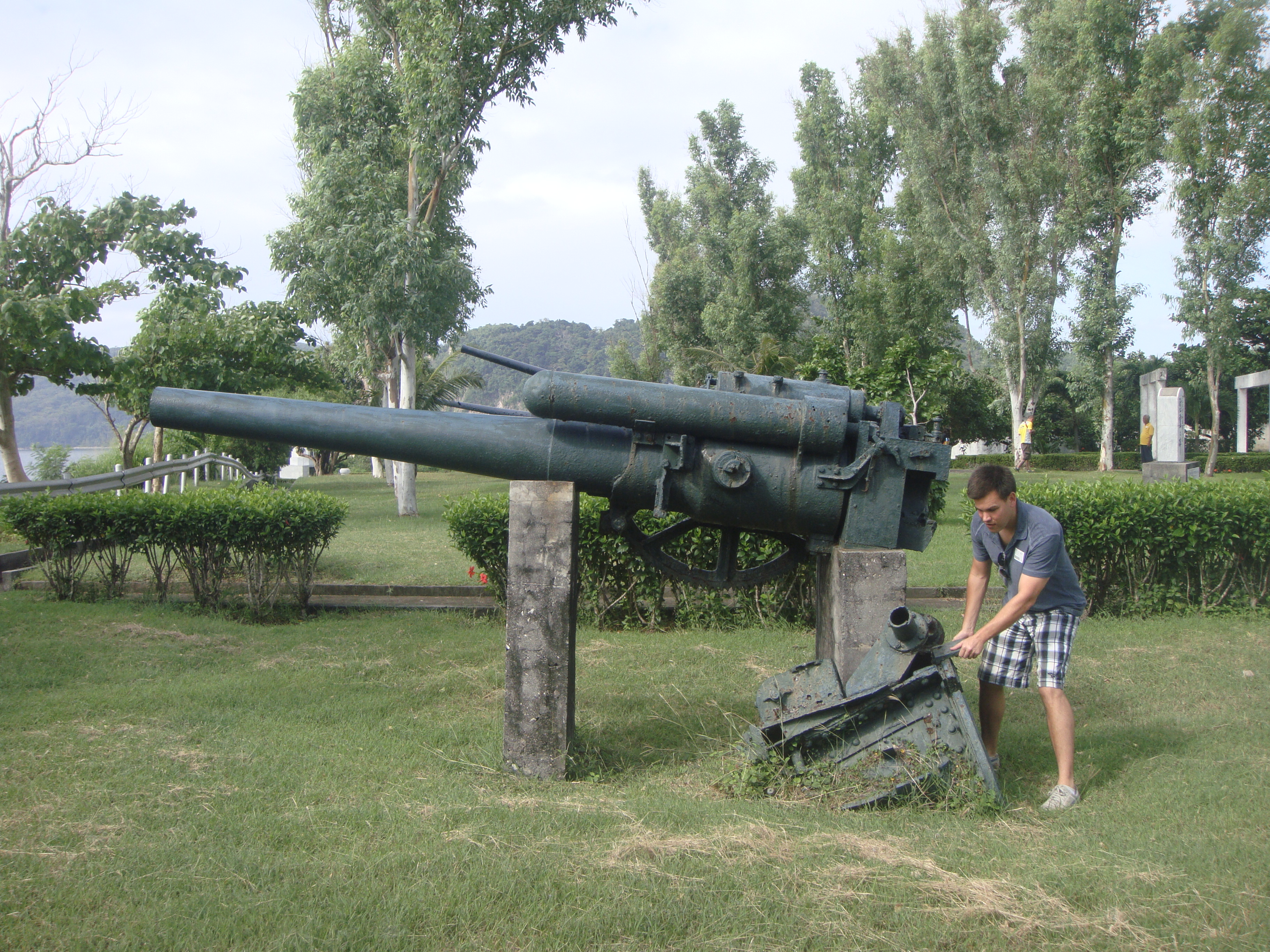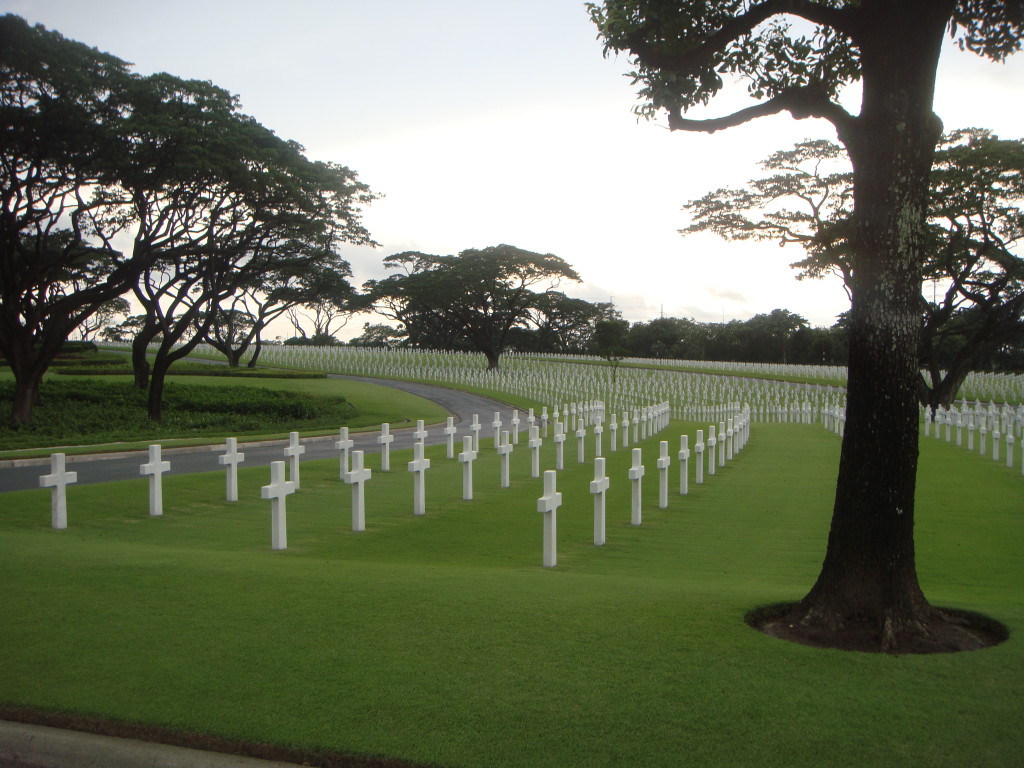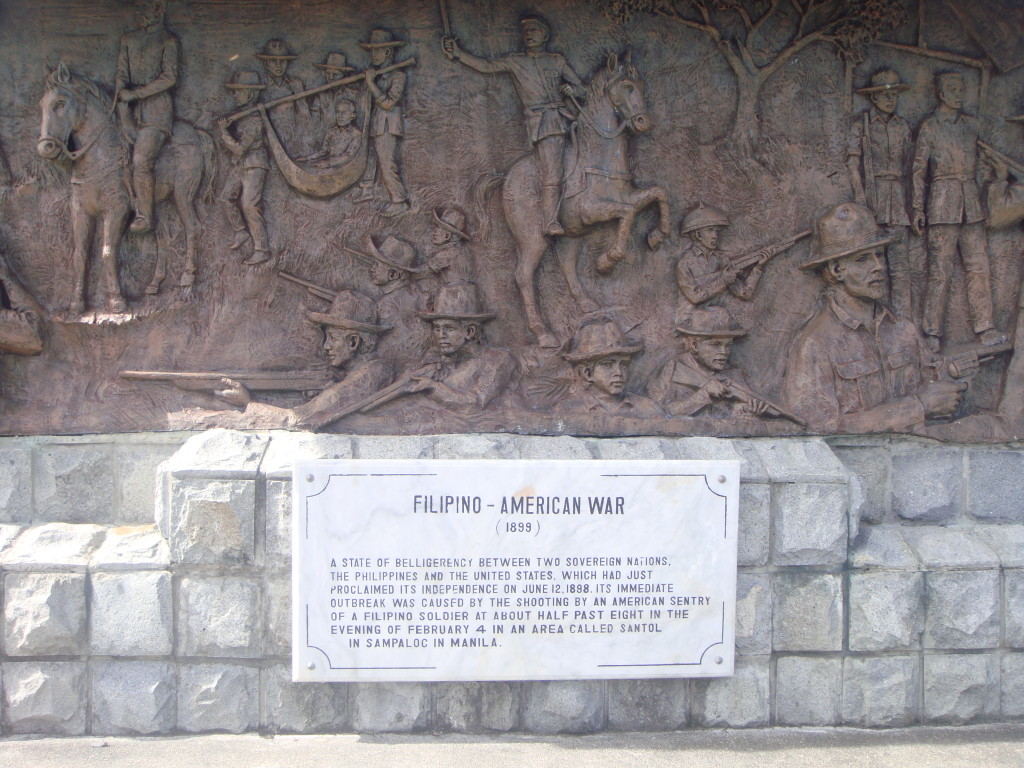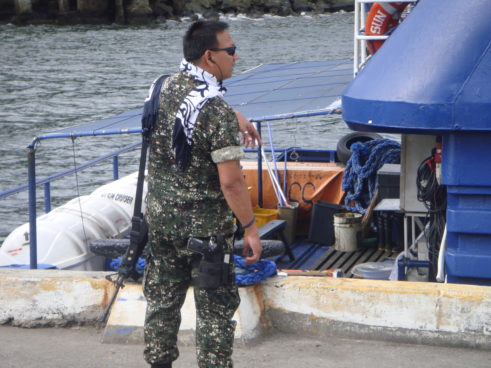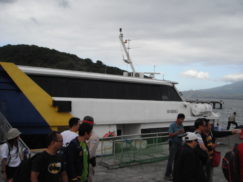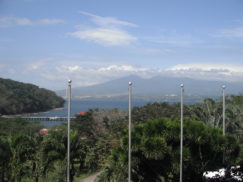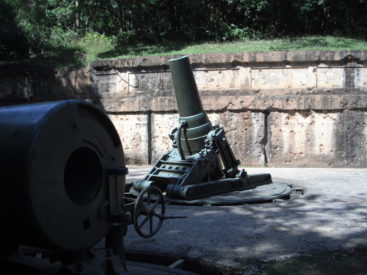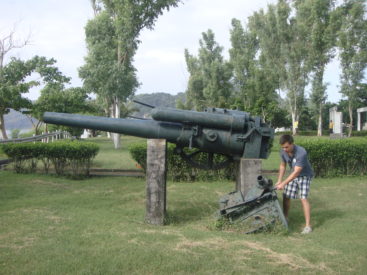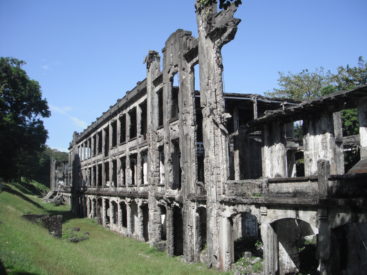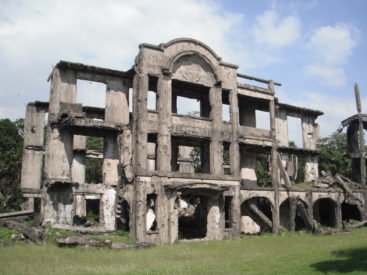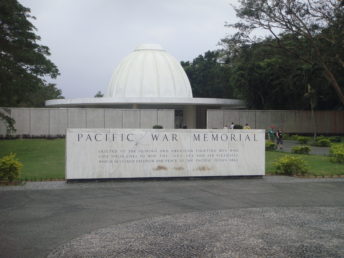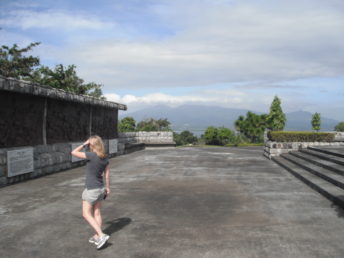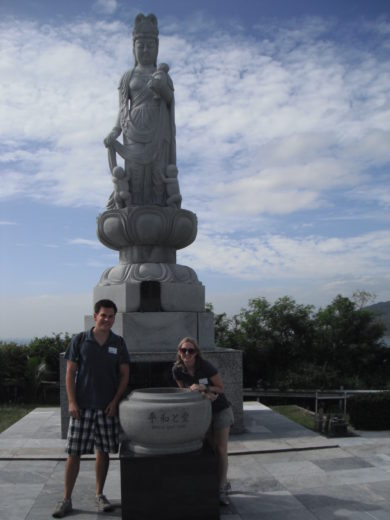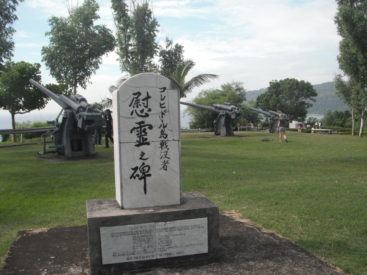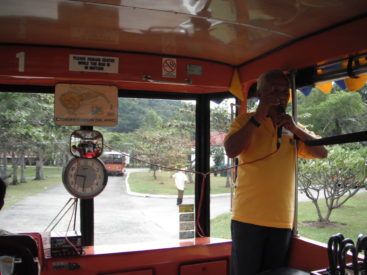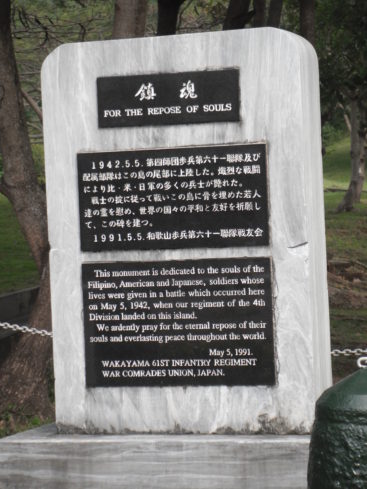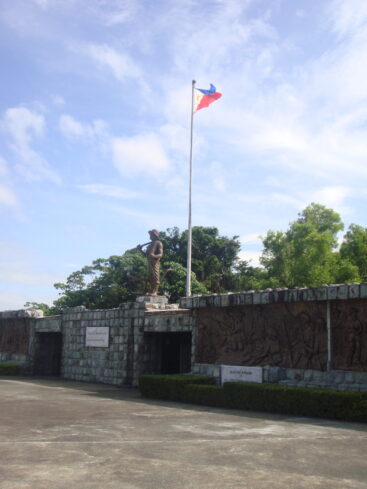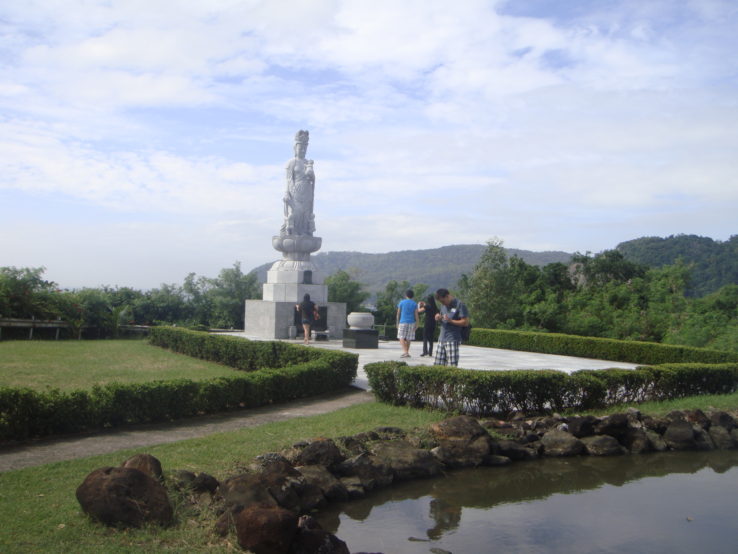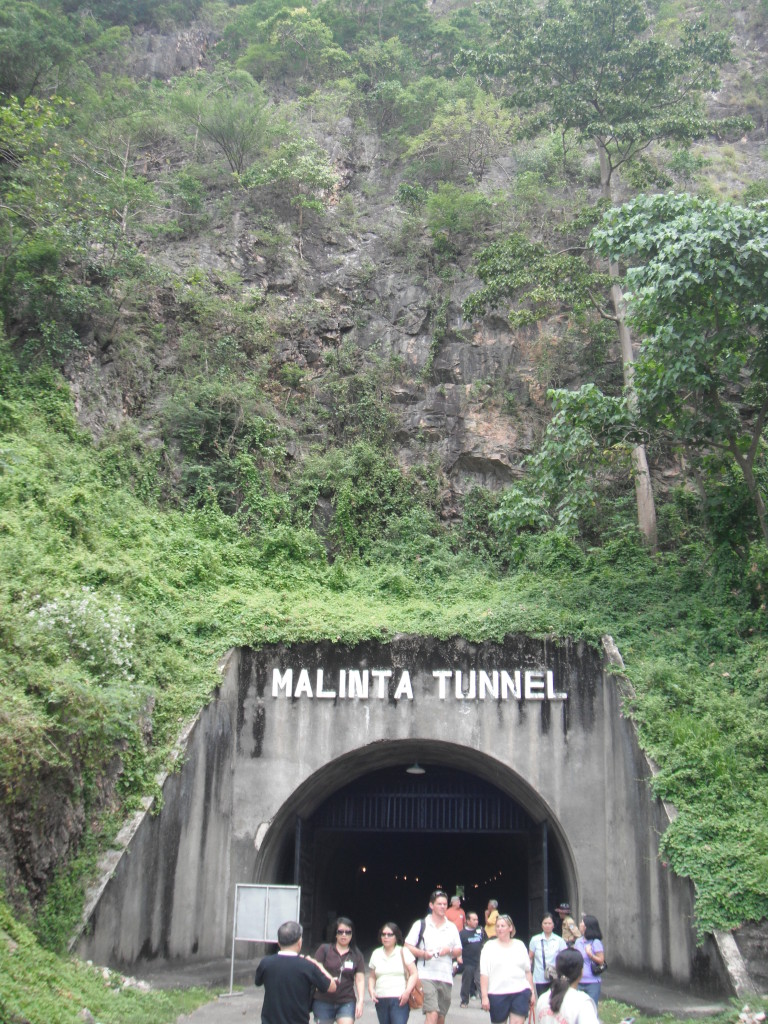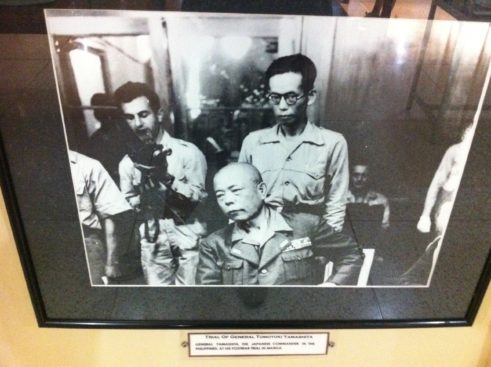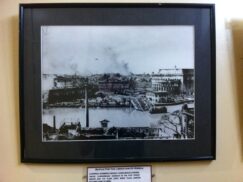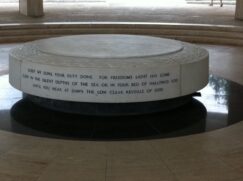Those are American graves in the Philippines. 17,000 buried here alone – many of them unidentified. The Philippines was a massive theater in World War II between the United States and Japan. After the Spanish-American war in 1898, the Philippines became a colony of the U.S.
We sent over waves of English teachers and this is why most Filipinos speak English quite well. When Japan was building an Asian empire in the mid-nineteenth century, they pushed the U.S. out of the Philippines in 1941, prompting General MacArthur to give his famous proclamation “I shall return”.
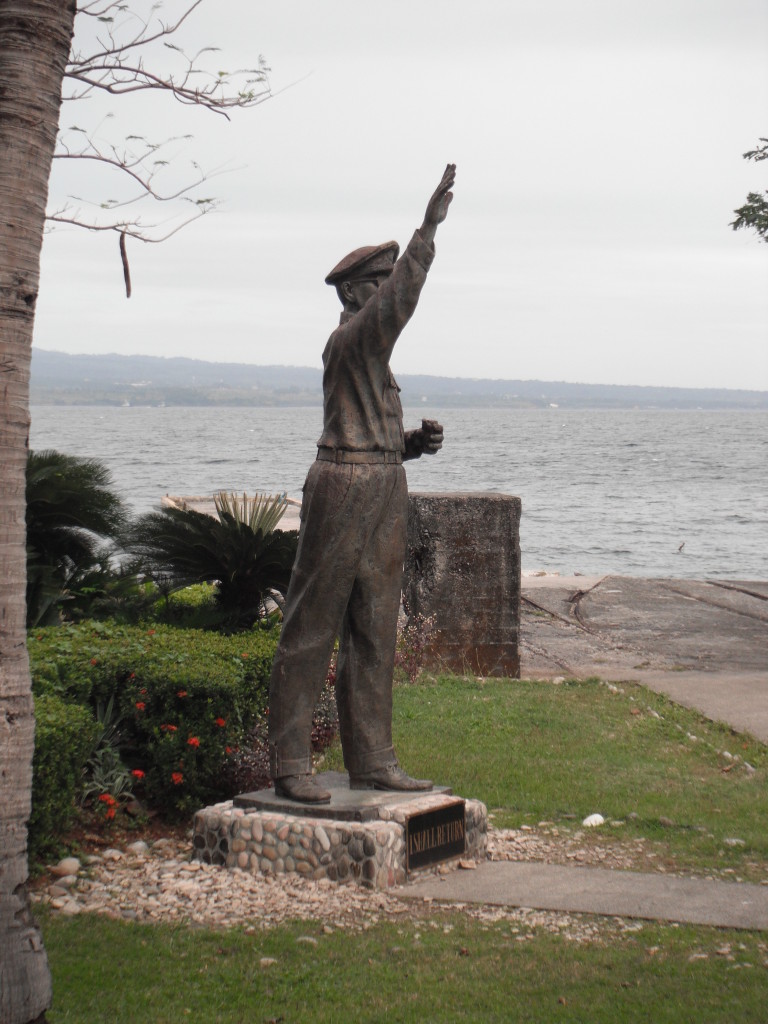
Corregidor (“corrector” in Spanish) is an island just off Manila that served as the last bastion for U.S. forces in the Philippines before the Japanese pushed them out in World War II. The island has served as an open air war memorial that has been almost undeveloped since the end of fighting. We took a Sun Cruise ferry from Manila for an all day tour of the island.
We took a tram all around the island and many of the ruins and machines are the same as they were after fighting ended.
Fighting between the Japanese and Americans was fierce. The battle of Leyte gulf in another region of the Philippines is the largest naval battle (in terms of tonnage) in the history of the world.
There are all kinds of memorials and a museum scattered throughout the island. All the tour trams were donated by the Japanese government.
U.S. forces resisted as long as they could – thousands took refuge in the Malinta tunnel on the island to stay safe from shelling and bombing.
Here are some more pics from the museum/memorial. The Japanese general in one of the photos was held responsible for the bombing that leveled Manila and hung from the gallows after the war was over.
After years of fighting, the U.S. finally retook the Philippines before the final push to end the Pacific theater of WWII – attacking the Japanese mainland. After WWII, the Philippines was set on a path to independence.
